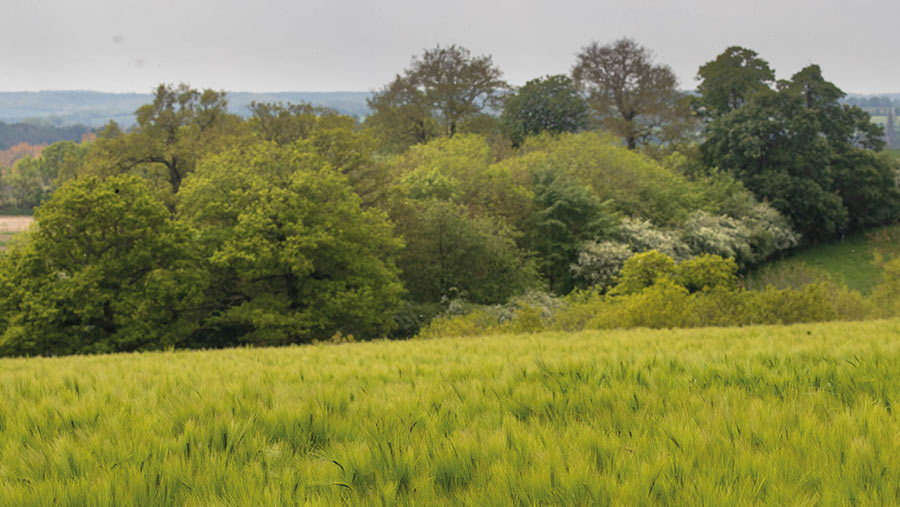UK forestry market value jumps almost 25% to more than £260m
 © Tim Scrivener
© Tim Scrivener The increased interest in planting trees to combat climate change has resulted in a huge jump in the UK forestry market’s demand and values.
The Forestry Market report from Savills includes analysis of all public and, where possible, private commercial forest sales of more than 50 acres.
The value of the UK market increased 23% to £262.7m in 2021, despite a 22% fall in the number of gross acres sold, to about 43,700 acres.
This remains in line with the medium-term average of 44,500 acres.
See also: Leisure property market booming from staycation demand
In addition, there was a high proportion of off-market activity, estimated to be at least 28% of the total number of sales. This compares to 32% in 2020 and an average of 14% over the previous four years.
The average gross value of forestry increased 39% to just over £6,000/acre last year. Meanwhile, the average price of a net productive (conifer) acre rose by a huge 61% to £9,599.
Regional market
Average forestry values across north Scotland are historically lower than more southerly areas in the rest of Britain.
However, as the demand for forestry has accelerated, buyers are seeing an opportunity to improve the performance of the traditionally less popular locations through new technology, improved species and management techniques.
The area reported the second largest market share (32%) across Scotland, England and Wales in 2021, with average values rising by 41% to £4,153/acre.
In central Scotland, market activity remained strong, with average values rising 29% to £9,500/acre, and the largest market share (33%), at just over 14,300 acres sold.
The number of acres sold in south Scotland during 2021 fell 8% to 8,787 acres. The average price doubled to £11,802/acre on the back of some very strong sales of large-scale, mixed-age commercial forests.
In England and Wales, the average price of commercial forestry traded was just under £30,000/ha (£12,140/acre) – a 90% increase on 2020.
The number of acres sold fell by about 2,471 acres to 6,615 acres and capital prices were very strong, correlating to exceptional timber prices, especially in Wales.
Grant funding available for woodland creation
- Woodland Creation Planning Grant (England) Provides funding to prepare a Woodland Creation Design plan that is UK Forestry Standard compliant.
- England Woodland Creation Offer Provides support for capital items and activities to establish new woodland.
- Countryside Stewardship (England) Provides funding for woodland creation, woodland management plans and improving the health of existing woodlands.
- HS2 Woodland Fund (England) Provides funding for woodland creation and restoration of plantations on ancient woodland sites. Land needs to be within a 25-mile zone of Phase One of the HS2 route from London to the West Midlands.
- Forestry Grant Scheme (Scotland) Provides an initial planting payment and annual maintenance payments of up to five years, alongside capital grants for fencing and tree protection.
- Glastir Woodland Creation Grants (Wales) Four different grant categories are available, each based on a generous capital grant paid on completion of the initial planting works, followed by 12 years of maintenance payments and woodland creation premium payments.
Planning for the future
Historically, forestry’s appeal as an asset class mainly related to the income potential from timber harvesting and capital appreciation of the property, both in a tax efficient environment, says James Adamson, head of forestry investment UK.
More recently, a considerable amount of activity in the sector is tied into the important role trees play in combating climate change, along with their benefits to society and other environmental contributions.
Much has been made of the devolved governments’ ambitious tree planting targets as part of the net-zero challenge and the mounting interest from institutional investors for land for tree planting.
This is happening without much thought about the long-term productivity of the woodland being created.
Our research shows that newer woodlands (up to 20 years) have, on average, 15% less productive area than older woodlands (60-80 years), and not all of this loss of productivity is down to land quality.
The current focus on the environment risks the creation of a generation of woodlands that suffer from lost opportunity.
Short-term decisions to preserve existing biodiversity fail to account for the lack of future income associated with it or its viability as woodland within the changed landscape.
In addition, the actual land required to meet the government’s new planting targets (74,000 acres to be planted annually), will far exceed the area planted with trees; if 25% of the land is unproductive, to plant 74,000 acres requires a further 18,500 acres a year to be taken out of alternative management systems, mainly for essential food.
In a country where land use change is under increasing scrutiny and land availability is finite, it is imperative that we make the most out of the land.
In some instances that will require a decision in favour of one use, which may be at the detriment of another.
A clearer woodland creation hierarchy that considers the full lifetime value of the forest would assist here.
Ultimately, policy should be driving a balanced approach that leads to the right tree, in the right place, with the right outcome, enabling truly long-term sustainability.
